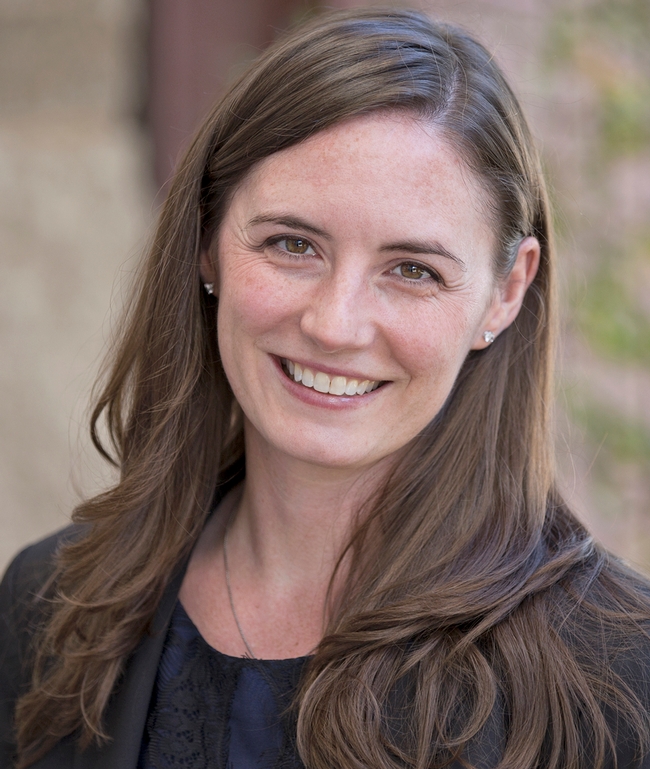The value of the 5-minute “elevator” speech to share your research with non-scientists
This article was originally published Oct. 20, 2017, in the American Society of Animal Science's Taking Stock D.C. blog https://www.asas.org/taking-stock/blog-post/taking-stock/2017/10/30/guest-blogger-delivers-powerful-message.
Anne Megaro is government and community relations director for the University of California Division of Agriculture and Natural Resources. She helps bench and field researchers spread the good news of their work by “sharing their story” with policymakers and community stakeholders. She earned a Ph.D. in Animal Science from Cornell University and was a 2010-2011 AAAS Science and Technology Fellow.
If you had to explain, in layman's terms, your current research area and the impact of your work on human lives, could to do it? Could you do it in five minutes?
This was one question asked of me during my interview for the AAAS Science and Technology Fellowship, which is a highly regarded and competitive year-long program geared toward Ph.D., M.D., and D.V.M. graduates who are looking to explore what it would be like to work in public policy on Capitol Hill. I like to think that I nailed this question in my interview (“I research milk fat and how it's healthy for people”), but then again, my research was easily translational…. and I had a lot of practice. In graduate school, I was constantly fielding questions from people outside my department who, when they found out I worked with cows, would instantly pepper me with a myriad of questions about milk – ranging from nutrition to hormone use to animal welfare. I loved the fact that every person I spoke to left our conversation knowing a little bit more about food and how it's produced.
What I didn't know then, however, was that these moments were perfect opportunities to reach people outside of the science arena and bring them into the fold, a step closer to understanding a world that seems too complex or foreign to comprehend. Science shouldn't be a black box and research shouldn't be siloed away from the view of – and use by – other professions. The world is increasingly dependent on science to deliver new technologies and research breakthroughs that will expand our knowledge and allow us to continue pursing healthy and prosperous lives.
To break down these silos, we need to learn how to translate science into forms that can be used by other professions, especially those professions that determine public policy. The good news is that there are science-minded legislators and staffers in the halls of Congress and in state capitols. Some have science backgrounds, some are – quite literally – rocket scientists, and some do not have science degrees but are exceptionally intelligent. They will be receptive to hearing about your research and what it will do to transform society. However, they likely won't have an hour to spend with you to discuss your work. At best, a half hour. Most likely, 15 minutes… and your meeting might take place in a loud, crowded, hallway.
Which brings us back to my initial point – the importance of being able to share your research in a five-minute “elevator” speech. If enough scientists stood willing and able to reach out and communicate their science, communicate their expertise, communicate the knowledge it has taken years of hard but exciting work to attain, where would we be? Would there be greater interest and support from Congress for agricultural research? Would a fundamental understanding of the challenges and opportunities facing farmers and the production gains needed to feed a world of nine billion people by 2050 stimulate greater conversation? How wonderful would it be if the information communicated came from unbiased, non-political, science-driven, credible, and professional sources?
Honing the skill of communicating to policymakers is not simple. It usually requires political prowess and sensitivity to current events. This should not take away from your message and it absolutely should not skew your research results. It should, however, keep you thinking about how to deliver your message to specific audiences. Be mindful that most elected officials and their staff will not have time to read a scientific article or annual report. Instead, develop a one-page “leave-behind” that is paragraph-free and full of graphics (not graphs). Make your message clear, and give real-world examples of your work's impact. Most importantly, follow up with an email or hand-written thank-you note. It's always nice to be nice, and you will be remembered for it.
I will step off my soapbox with this message: science is no longer limited to the reach of laboratories and universities. It leaks and stretches into all factions of life and is essential to the productivity, prosperity, and health of all people. With increasing scientific discoveries in nutrition, medicine, agricultural production, natural resource and environmental science, it is essential that science be effectively communicated and shared with non-scientists. So, the next time someone asks you about your research, don't tell them you work on anti-carcinogenic bioactive fatty acids. Tell them you're working to make milk fat healthier. Tell them how your work could transform society. Share your story.

